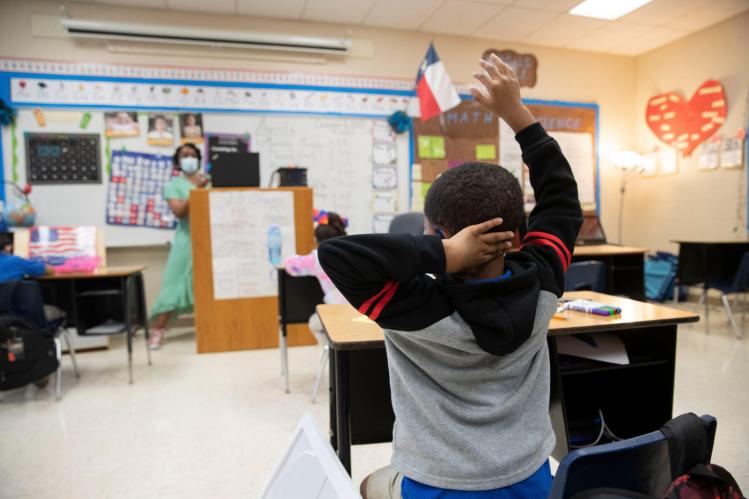
What’s at stake in the fight over reopening schools? That such a question, phrased in such a way, needs to be asked at all is indicative of how poorly we’ve tended to public education since the beginning of the pandemic one year ago. Millions of students across the country have lost some amount of in-person learning. Millions still haven’t returned to the physical classroom at all, getting by—if that can be said—via remote schooling, which everyone agrees is no substitute for the real thing. Not only does learning suffer; children’s emotional health also deteriorates the longer they’re away from teachers and peers. Students of color and those who live in poverty fare worse than other students. Children who rely on schools for food and, in some cases, as havens from abusive environments, face still greater precarity. The socioeconomic consequences of a lost year (or more) of schooling are frightening to contemplate and could linger for generations.
What people disagree on is how to get back to something close to normal, soon, while minimizing the chances of anyone getting sick and dying from COVID-19 as a result. Frustrated parents and critics of organized labor are angry at teachers’ unions for seeking guarantees on safety before in-class learning resumes. Teachers criticize government officials for delays in vaccinations and for demanding they return to work in poorly ventilated buildings. Big-city systems with poorer students and aging infrastructure are unfairly compared with private and religious schools. Republicans in Washington, suddenly interested in the well-being of the nation’s schoolchildren, criticize the Biden administration for moving too slowly. White parents are far more likely to support the immediate resumption of in-person instruction, while the majority of Black and Latino parents, aware that COVID-19 has been especially dangerous to people of color, want remote-only learning to continue.
At least there’s revived commitment at the federal level to communicate about the pandemic in a coordinated and fact-based manner. New guidelines issued in February by the Centers for Disease Control for ensuring safe reopening of schools are clearer and more focused than those issued under the previous administration. Yet while the codification of steps for controlling virus transmission—mask-wearing, social-distancing, handwashing, and regular cleaning of facilities—is welcome, many school systems lack the physical and financial resources to implement them. Another recommendation, “contact tracing in combination with isolation and quarantine, in collaboration with the health department,” is sensible, but, without guidance on how to achieve it, not very helpful. The Biden administration, admitting to the scope of the challenge it set for itself by promising to open all schools full-time within a hundred days, has since advanced the far more modest goal of getting schools to offer in-person learning at least one day per week.
Data increasingly shows that schools are relatively safe, especially elementary schools, because young children are less prone to spreading infection. Rhode Island managed to restart in-person learning, and even New York City has fared well enough since reopening elementary schools last fall that it was set to reopen middle schools in late February. With vaccinations underway, there’s a clear path forward in addressing the immediate crisis. But other challenges await. If the pandemic has proved that public education is a vital public good, it has also shed more light on the disparities in how that good is distributed. And it has emboldened those opposed to the very idea of public education, who’ve seized on the prolonged closures to sound new calls for vouchers, privately managed charters, and for-profit schools. Public schools will reopen, but the right of all American children to a free, high-quality education is yet to be secured.
